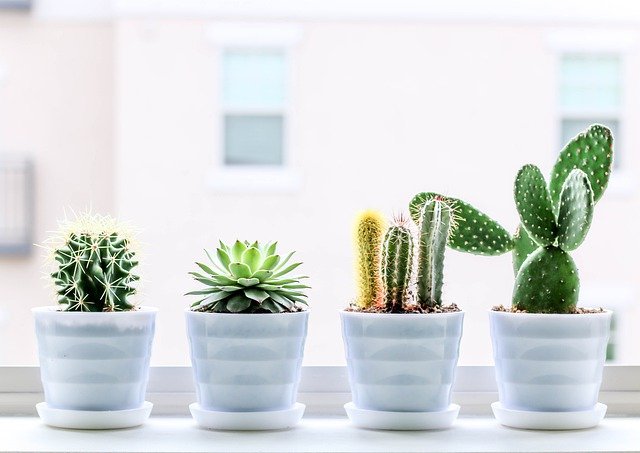People who love plants know that when they have a vine plant, they really need to do everything possible to propagate it. If it doesn’t propagate well, it is most likely to fail in serving its purpose: making your living space appear beautiful! Compared to other similar plants, propagating a vine plant is really important, and you need to take all the right steps to help it propagate well. If you already have no idea about this process, this article will let you know about everything associated with this concept.
Understanding The Idea Of Propagation Of A Plant
Before honing your skills at propagating a plant, you should be well aware of the concept of propagation. Simply put, propagation refers to the growth of a new plant from the previous one. To enhance the number of plants in your garden, you won’t have to buy new ones. Rather, you can simply grow more with those you already have.
The propagation of plants is fun and exciting. However, you need to be well aware of the environment that requires a plant to spread and grow. If you have trailing vines, the propagation process would be easier than it is for others. For this process to succeed, you would need the right amount and quality of water and soil.
Steps To Follow For The Propagation Of Your Vine
To learn how to help the hanging vine plants propagate faster, read this article and by the end of it, you will be aware of everything entailing it.
1. Selecting The Correct Section Of The Plant
This is probably the first and biggest mistake that people commit while starting the process of propagating the plant. They choose the wrong section of the plant, which doesn’t actually have the quality to grow further. This is why selecting the right section of the plant will ensure the success of your goal.
The section you choose for this needs to be healthy at the most. It must have robust growth itself. For that matter, search for the large leaves or the newest shoots possible. Sections with the strongest vines are the best areas for propagation. However, if you can’t find the right place, you can surely trim some parts and reach it. Don’t be scared of trimming the plant, as it will help you with new growth quite a lot.
First, choose a section of your vining plant with healthy, robust growth. Look for large leaves, new shoots, and strong vines. If you’re concerned about trimming back your plant, don’t worry, trimming eliminates heavy vines and can stimulate new growth.
2. Look For The Node
The node is the most crucial place of the plant that will help it propagate. If your selected section of the plant doesn’t have a node, the cuttings will not grow roots. It is basically the place of a leaf that acts as a rooting zone in the future. Vines grow aerial roots from the notes and regenerate further. Also, it helps in locating them easily. If you select a vine plant that has at least two nodes, the new sections will grow easily.
3. Select An Appropriate Rooting Medium
The rooting medium means whether you will grow your vine plants outdoor with the help of water or soil. Most people opt for water as a rooting material, as it helps them observe the progress of the roots that develop in this growth process.
However, if you are already an experienced propagator, you can surely choose potted soil and root your plants there. What sets these two mediums apart is the fact that potted soil reduces the chances of transplant shock. As you don’t need to cut it from one medium to the other, it will not need any transitioning time.
4. Observe Your Plant Properly
To make sure the propagation process is a success, you must observe your plant pretty well! While trimming it, you need to be familiar with this mother plant. In case you are cutting the stem, you have to observe it quite carefully. Cut it from the portion where it has at least one node. If there are more, the propagation of the plant will get easier and faster.
When cutting the vine, make sure to use a pruning shear that is well-sterilized. Now, you have to cut your vine an inch right below the selected node. If you find the node to be curly, you would have to be extra careful while making the cut.
Once you have made the cut, place it in the water and let it sit in it properly. This will help it get the much-needed nutrition. If you cut numerous parts of the plant, get a green tie and organize this bundle properly. This will ensure that the roots don’t tangle into each other and negatively affect the growth process.
If you want to go for the minimal route, simply take a vase and put enough water in it. Now, place all the cuttings inside of it properly. If you can manage a vase that is opaque, it will get easier for you to see through its clear glass.
Place the roots as far as possible from direct sunlight. However, as the roots need warmth to grow, the sunlight coming to them through the vase opening would be enough to make them cold and dry.
5. Wait With Patience
Patience from your side would be required to make the vine propagate freely. If you keep checking it consistently and touch it several times a day, you may end up hindering its natural growth. Just let it be on its own, and you will soon see it sprouting well.
Final Thoughts
Propagating a plant is an intricate process. However, when it comes to vine climbing plants that have the natural ability to grow and elevate, things get a little easier. You just need to showcase the utmost level of care while helping your favorite vine plant grow independently.










